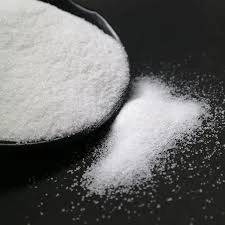The Importance of Water Purifying Chemicals
Water is a fundamental resource for all forms of life. However, due to pollution, industrial waste, and inadequate sanitation, access to clean and safe drinking water remains a challenge in many parts of the world. To combat this issue, water purifying chemicals play a crucial role in ensuring the water we consume is safe and free from harmful contaminants. This article explores the various types of water purifying chemicals, their functions, and their significance in maintaining water quality.
Types of Water Purifying Chemicals
1. Coagulants and Flocculants These chemicals are essential in the initial stages of water treatment. Coagulants, such as aluminum sulfate and iron salts, help aggregate smaller particles into larger clumps known as flocs. Flocculants enhance this process by facilitating the settling of these larger particles, making it easier to remove impurities from the water. This method is particularly effective in treating turbid water.
2. Disinfectants One of the most critical aspects of water purification is the elimination of pathogens that can cause waterborne diseases. Common disinfectants include chlorine, chloramines, and ozone. Chlorine is widely used due to its effectiveness and cost-efficiency in killing bacteria and viruses. However, it can form harmful by-products when reacting with organic matter, thus careful monitoring is essential. Ozone, although more expensive, is a powerful disinfectant that leaves no harmful residues but must be used with caution to avoid over-oxidation.
3. Oxidizing Agents Chemicals like potassium permanganate and hydrogen peroxide are classified as oxidizing agents. They are used to remove iron and manganese from water and can also aid in the breakdown of some organic contaminants. These agents alter the chemical structure of pollutants, rendering them less harmful.
4. pH Adjusters The pH level of water significantly affects its quality and the effectiveness of other water treatment chemicals. Acidic or alkaline water can lead to corrosion or scaling in pipes and fixtures. Chemicals such as sodium hydroxide can be used to increase pH, while sulfuric acid can lower it, ensuring the water is within the optimal range for treatment processes.
water purifying chemicals

5. Fluorides In some regions, fluorides are added to drinking water to prevent dental cavities. However, the balance is crucial, as excessive fluoride can lead to health problems. It is vital to monitor fluoride levels to ensure they remain within the recommended guidelines.
Significance of Water Purifying Chemicals
The use of water purifying chemicals is paramount in safeguarding public health. They effectively reduce the concentration of harmful microorganisms, heavy metals, and organic pollutants in water. With the rise in industrialization, urbanization, and climate change, pollution levels in water bodies are escalating. The application of these chemicals in water treatment processes helps to mitigate these risks.
Moreover, water purifying chemicals optimize the taste and odor of drinking water. Chlorine, while a powerful disinfectant, can impart a chemical taste. By carefully managing the doses and combining with other treatment methods, water treatment facilities can provide palatable water to consumers.
Furthermore, the economic implications of effective water purification cannot be understated. Access to clean water enhances the quality of life and promotes economic development. Communities with reliable water quality see improvements in health outcomes, which translates to reduced healthcare costs and increased productivity.
Conclusion
In conclusion, water purifying chemicals are essential in the battle against water contamination. They play a vital role in ensuring the water we consume is clean, safe, and pleasant to taste. As water pollution continues to pose serious environmental and health challenges, advancements in water purification processes and the development of more effective chemicals will be crucial. By prioritizing research and innovation in this area, we can secure a sustainable future with access to clean water for generations to come. The responsibility lies with governments, industries, and individuals to recognize the importance of these chemicals and to work collaboratively towards a cleaner, healthier planet.

